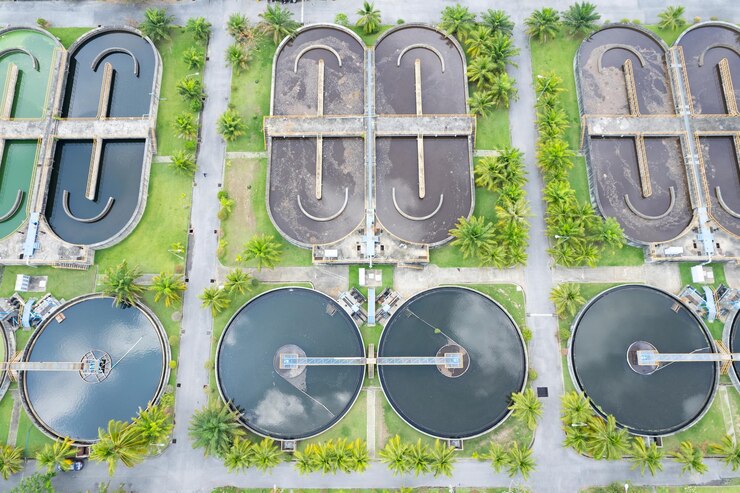Septic systems play a critical role in managing wastewater for properties that are not connected to municipal sewer systems. In rural areas and growing suburban developments across Canada, these systems provide an effective and environmentally friendly way of treating wastewater. However, designing a septic system requires a deep understanding of local regulations, soil conditions, and best engineering practices.
At nEngineering, we specialize in septic system design tailored to Canadian conditions. Whether you’re constructing a new home, a commercial building, or upgrading an existing system, understanding the fundamentals of septic system design is crucial to ensure efficient operation and compliance with local regulations.
The Basics of Septic System Design
A well-designed septic system ensures that wastewater is treated and disposed of safely, preventing contamination of groundwater and local water sources. The typical components of a septic system include:
- Septic Tank – A watertight container where solids settle at the bottom, and liquid (effluent) exits to the drain field.
- Drain Field (Leach Field) – A network of perforated pipes or other distribution systems buried under the ground, which allow effluent to percolate into the soil.
- Soil Absorption Area – The soil’s ability to absorb and treat effluent through natural processes such as microbial digestion and filtration.
The key to a successful septic system design is ensuring that the size, type, and location of these components are appropriate for the property’s unique characteristics.
Factors Influencing Septic System Design in Canada
1. Soil Conditions
The type and permeability of soil are crucial in septic system design. In Canada, soil varies widely, from the clay-rich soils in Ontario to sandy soils in the Maritimes. Before designing a system, soil tests are required to assess its ability to absorb wastewater. These tests determine the percolation rate, which will dictate the size of the drain field.
2. Local Climate
Canada’s diverse climate, from cold northern regions to temperate southern areas, impacts septic system design. In colder regions, frost can damage pipes and tanks if the system is not properly insulated or buried deep enough. Snow cover can also affect the percolation rate of soil, slowing down the absorption of treated water.
3. Property Size and Layout
Septic systems require enough space for a properly sized drain field. In densely populated or smaller properties, this can present challenges. Designs may need to include alternative methods, such as mound systems or advanced treatment systems, to handle wastewater efficiently.
4. Water Table and Proximity to Water Bodies
High water tables or proximity to lakes, rivers, and streams can pose challenges. If the groundwater level is too high, effluent can’t be effectively absorbed, leading to contamination risks. In these cases, a more advanced septic system design may be necessary, such as elevated drain fields or pre-treatment options.
Canadian Septic System Design Regulations
Septic system regulations in Canada vary by province and municipality. However, common standards must be adhered to across the country to ensure safety and environmental protection.
- Ontario: Ontario’s Building Code regulates the design, installation, and maintenance of septic systems. Systems handling less than 10,000 liters per day are overseen by the Ministry of Municipal Affairs and Housing. Property owners must hire qualified professionals, like nEngineering, to design and install compliant systems.
- British Columbia: The BC Ministry of Health governs septic systems through the Sewerage System Regulation. This regulation mandates that all systems be designed by a registered professional or accredited designer, and that soil assessments and permits are obtained before installation.
- Alberta: Alberta’s septic systems are regulated under the Private Sewage Systems Standard of Practice, which outlines the necessary soil tests and minimum design requirements for residential and commercial systems.
Each province may have its unique requirements, but the overarching theme is to protect water resources, public health, and the environment.
Types of Septic Systems in Canada
1. Conventional Septic Systems
The most common type, conventional systems consist of a septic tank and drain field. This system works well in areas with adequate space and appropriate soil conditions. However, it may not be suitable in areas with high water tables or poor soil.
2. Mound Septic Systems
A mound system is an alternative design used when the property has high water tables or shallow soil depths. A mound of sand or gravel is constructed to allow the effluent to percolate down into the soil. This system requires more space and maintenance but offers a solution for challenging terrains.
3. Chamber Systems
Chamber systems use plastic chambers instead of pipes in the drain field. These systems can accommodate sites with poor drainage and are generally easier to install, though they may require regular monitoring.
4. Aerobic Treatment Units (ATUs)
An ATU is an advanced system that uses oxygen to enhance bacterial treatment of effluent. This system provides superior wastewater treatment and is ideal for properties near sensitive water sources. While more expensive than conventional systems, ATUs are effective in areas with poor soil conditions or high environmental standards.
The Role of nEngineering in Septic System Design
At nEngineering, our team of experts is committed to providing custom septic system design solutions that meet both regulatory requirements and the specific needs of each property. Here’s how we approach septic design:
- Site Assessment – We begin by conducting a thorough site assessment, including soil testing, groundwater level evaluation, and topography mapping. These steps help us understand the unique challenges and opportunities of the site.
- Customized Design – Based on the site conditions, we create a design that optimizes performance while adhering to local regulations. We work closely with clients to ensure that the design meets their needs and budget.
- Regulatory Approval – Our team liaises with local authorities to ensure all necessary permits and approvals are obtained. We navigate the complex regulatory landscape so that our clients don’t have to.
- Installation Support – Once the design is approved, we provide support during installation to ensure the system is installed according to the design specifications.
- Maintenance Plans – A septic system requires regular maintenance to function effectively. We provide ongoing support and maintenance plans to ensure the system continues to operate efficiently for years to come.
Septic System Design and Environmental Considerations
With increasing concerns about environmental sustainability, septic system design is evolving. Many Canadian provinces are adopting stricter regulations to protect water resources, and innovative systems are being developed to improve wastewater treatment.
At nEngineering, we are at the forefront of these innovations, incorporating sustainable design practices to reduce environmental impact. We focus on systems that conserve water, use natural processes for treatment, and minimize land disturbance during installation. Advanced systems such as ATUs and constructed wetlands are becoming more popular as they offer higher levels of treatment and flexibility in challenging environments.
Conclusion
Designing a septic system design Canada requires careful planning, a deep understanding of local regulations, and expertise in site-specific conditions. With a diverse range of soil types, climates, and environmental considerations, working with professionals like nEngineering is essential to ensuring a successful, long-lasting system.
Whether you are building a new home, upgrading an existing system, or managing a commercial property, our team at n Engineering is ready to provide expert septic system design services across Canada. With a focus on sustainability, compliance, and customer satisfaction, we help our clients navigate the complexities of septic system installation, ensuring efficient wastewater management for years to come.

